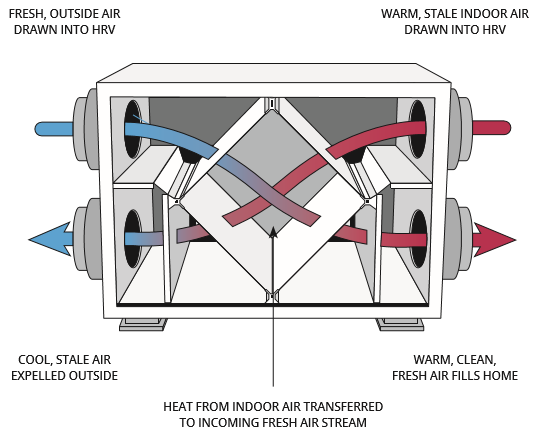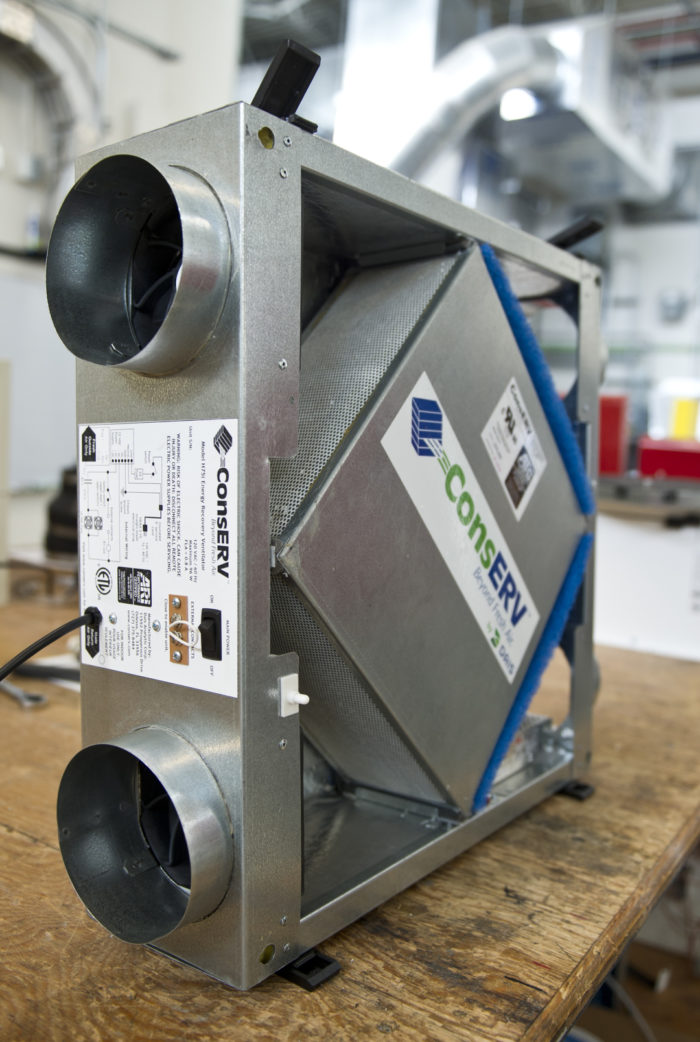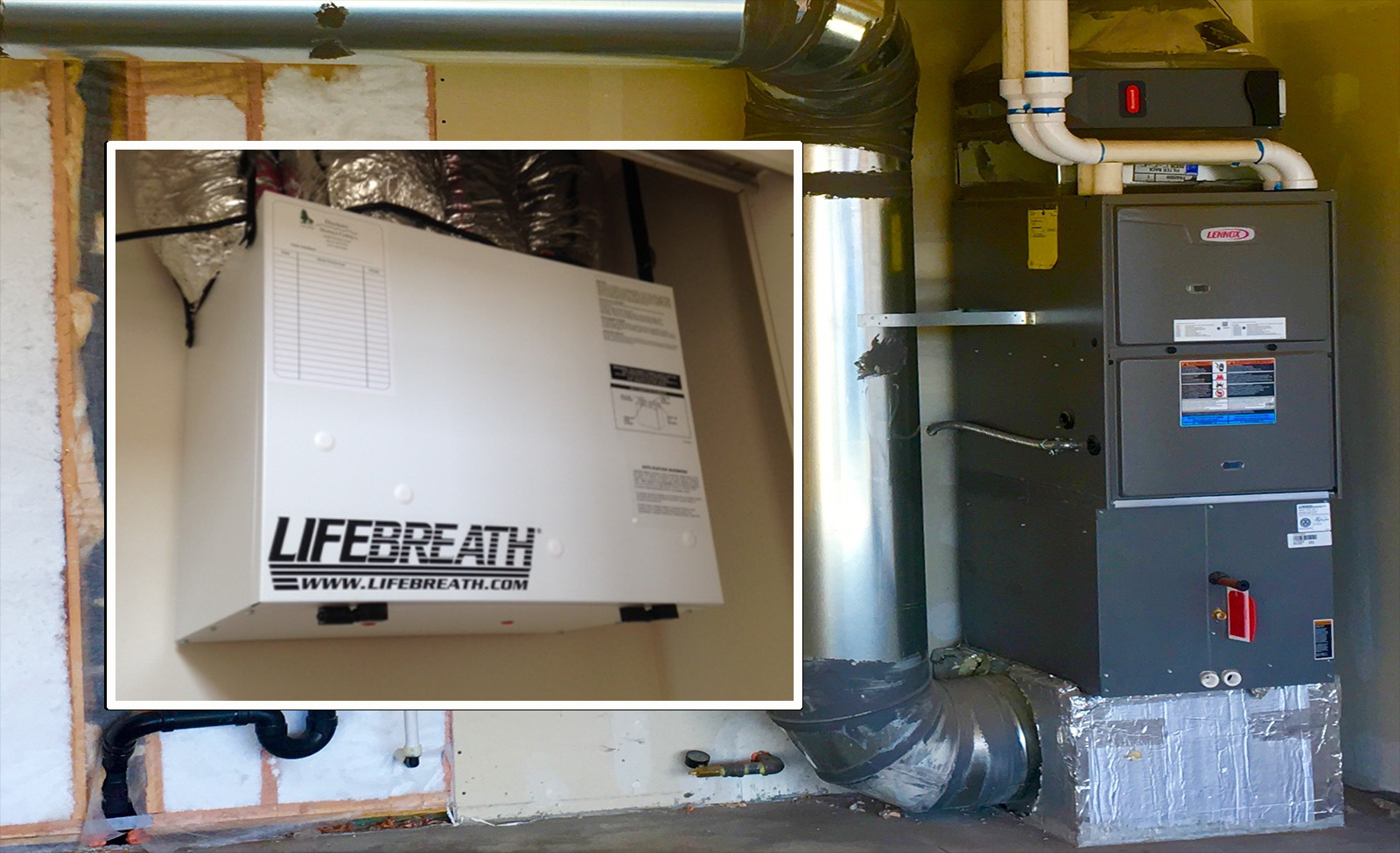The All-Inclusive Guide to the Uses of Heat Recovery Ventilation in Modern Buildings
Heat Recovery Ventilation (HRV) systems represent a significant improvement in developing technology (HRV Heat Recovery Ventilation). They supply an approach for trading stale indoor air with fresh outdoor air while lessening energy loss. This method not just improves indoor air high quality yet also adds to energy efficiency in both property and business buildings. Understanding the different applications and advantages of HRV can reveal its crucial duty in modern design and sustainability efforts. The ramifications of this innovation deserve checking out even more
Recognizing Heat Recovery Ventilation Equipments

Many contemporary buildings focus on power effectiveness, recognizing warm recuperation ventilation (HRV) systems is vital for optimizing interior air high quality and reducing energy intake. HRV systems function by moving warm from stagnant interior air to incoming fresh air, efficiently preserving comfortable indoor temperatures while lessening power loss. These systems include a heat exchanger, followers, and ductwork that facilitate the blood circulation of air. During wintertime, HRV systems catch and recycle heat from the outgoing air, while in summer, they can help cool incoming air. By continuously exchanging air, HRV systems also reduce humidity and the focus of interior contaminants. Appropriate setup and maintenance of HRV systems are important for their efficiency and efficiency in improving general building efficiency and comfort.
Advantages of Heat Recovery Ventilation
Heat recovery ventilation systems use various advantages that improve both power efficiency and indoor air quality in modern structures. By capturing and recycling power from exhaust air, these systems significantly minimize heating & cooling costs, causing lower power consumption. They preserve a constant circulation of fresh outside air, decreasing the threat of interior air toxins and irritants. This continuous exchange assists regulate moisture levels, avoiding mold and mildew development and making sure a much healthier living atmosphere. Additionally, HRV systems add to sustainability goals by decreasing total carbon impacts. Their capability to optimize air flow without giving up thermal comfort makes them a useful enhancement to modern structure layout, advertising both financial and eco-friendly benefits.
Applications of HRV in Residential Structures
As house owners increasingly prioritize power effectiveness and indoor air high quality, the applications of heat recuperation ventilation (HRV) systems in property buildings have actually become more common. HRV systems are especially helpful in firmly sealed homes, where keeping fresh air blood circulation is crucial for preventing dampness accumulation and interior contaminants. They successfully move warm from outward bound stagnant air to inbound fresh air, reducing power costs connected with home heating and cooling. In addition, HRVs can boost convenience degrees by controling humidity and temperature. They are likewise adaptable for numerous property styles, consisting of single-family homes and multi-unit structures. On the whole, incorporating HRV systems sustains lasting living techniques while ensuring a healthier interior setting for owners.
HRV in Business and Industrial Setups
In business and industrial setups, the application of heat healing air flow (HRV) systems has actually become progressively important for maximizing energy performance and maintaining air high quality. These systems efficiently transfer warm from exhaust air to inbound fresh air, decreasing the requirement for added heating or cooling. This not just reduces energy costs yet likewise adds to sustainability campaigns. Industries such as manufacturing, warehousing, and office complex profit greatly from HRV systems, as they assist regulate her response temperature and humidity degrees, making certain a comfortable and efficient atmosphere. HRV systems help in removing impurities and excess moisture, boosting interior air high quality. As policies around air quality become stricter, the fostering of HRV innovation is most likely to expand, making it an important part of modern-day commercial and industrial facilities.
Future Patterns in Heat Recovery Ventilation Modern Technology

Often Asked Concerns
How Does Heat Recovery Ventilation Impact Indoor Air High Quality?
Heat recovery ventilation considerably enhances indoor air top quality by constantly trading stale indoor air with fresh outdoor air while recuperating energy. This process minimizes pollutants, maintains suitable humidity degrees, and continue reading this ensures a much healthier setting for owners.
Can HRV Solutions Be Mounted in Existing Structures?
HRV systems can indeed be set up in existing buildings. Retrofitting may need modifications to ductwork and air flow formats, yet it substantially improves energy effectiveness and interior air quality, making it a feasible option for older frameworks.
What Maintenance Is Required for HRV Solutions?

Exist Details Climates Where HRV Is More Reliable?
Heat recovery ventilation systems are particularly reliable in environments with significant temperature distinctions in between periods. These systems optimize power performance by recovering heat from exhaust air, making them optimal for both cool and reasonably cozy environments.
Just How Do HRV Solutions Affect Energy Bills?
